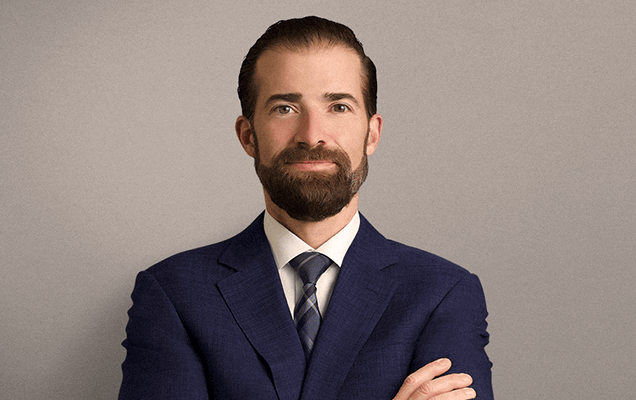The pain caused by trigeminal neuralgia can be centered anywhere along the path of the trigeminal nerve, from the temple and in front of your ear, through the center of your cheek and down through your upper and lower teeth. It typically presents as an electric, shock-like pain on one side of the face. While working with your doctor to come to an accurate diagnosis of trigeminal neuralgia, you may be evaluated for other pain-causing disorders or diseases.
Once those other ailments have been eliminated, or imaging shows compression along the trigeminal nerve, which is often indicative of primary trigeminal neuralgia, you can begin working toward effective treatment plans. Trigeminal neuralgia ear pain is treated similarly to trigeminal neuralgia pain that occurs elsewhere along the nerve’s path.
Affirming Trigeminal Neuralgia Diagnosis
If the pain began immediately after a dental procedure and is located only in the teeth area, this may be more suggestive of injury to the nerve after it has left the brain, and this is not typically treated in the same way as classic trigeminal neuralgia.
When the pain you are experiencing is centered in the region of your ear, your neurologist will need to consider if you are actually experiencing geniculate neuralgia. In geniculate neuralgia, the pain also has its root in a compressed nerve – except it is a different nerve from that which causes trigeminal neuralgia. Because surgical interventions focus on eliminating or lessening pain at the source along the nerve’s path, it is vitally important to determine which nerve is in play. Geniculate neuralgia patients commonly describe the pain they experience as akin to being stabbed in the ear with an ice pick. The nature of the pain you are experiencing can help with differentiation, but radiological imaging can better inform your physician as to which nerve is being compressed. Pain IN the ear is unlikely to be trigeminal neuralgia.
Other diagnoses that must be eliminated before it is determined that you have trigeminal neuralgia include tumors of the brain and facial area and multiple sclerosis. Again, imaging can help your doctor to make the correct diagnosis when considered in alignment with your current symptoms and overall health history.
Treating Trigeminal Neuralgia Ear Pain with Medications
The first line of treatment for all cases of trigeminal neuralgia is through antiepileptic medications like Tegretol and Trileptal. The same properties that control seizures work to calm the nerve channel and control trigeminal neuralgia pain. Doctors may also prescribe agents like Neurontin or Klonopin may also be used successfully in medicinally managing your trigeminal neuralgia ear pain.
Treating trigeminal neuralgia can be as tricky as reaching that diagnosis. It is not uncommon for patients to have to try varying levels of medication dosages, as well as different medications, to achieve relief. This experimentation while in search of relief can be time consuming, as it is necessary for your body to acclimate to the new medications and discover what level of medication is appropriate.
Be very wary of healthcare providers who seek to prescribe pain medications for your trigeminal neuralgia. Narcotic pain medications are successful only in masking pain, not addressing the root cause of your disorder. Narcotic pain medications can be addictive, which can lead to abuse of the medication and make it hard to wean off those medications in the future. Additionally, you’ll need your pain not to be masked as you work to find a treatment plan that works for you.
Are you out of options
to eliminate your pain?
Treating Trigeminal Neuralgia Nerve Pain Surgically
Medical management can fail for a variety of reasons. First, you may never find a medication or dosage level that truly enables the abatement of your symptoms. Certain medications simply do not work with certain patients. Second, you may become acclimated to your medication, meaning that you’ll need to take higher and higher doses to achieve relief before it simply isn’t possible to go any higher in dosage. Third, you may experience unwanted side effects from medications, like feeling dizzy, spacey, drowsy, uncoordinated or unclear in mental processes. When the side effects overpower the benefits achieved, it’s time to consider your next option. When medical management fails, a surgical procedure may be considered to treat trigeminal neuralgia.
Microvascular decompression for trigeminal neuralgia ear pain is the preferred treatment for patients who are otherwise healthy and whose imaging shows nerve compression. During this procedure, your surgeon will create an opening behind the ear on the side where you’re experiencing pain, then locate the area of compression and end that compression by placing a surgical sponge between the nerve and the impinging blood vessel. Due to opening your head, this is considered major surgery, which is why it’s only appropriate for patients who are healthy and able to withstand this type of procedure who have clear signs of compression of the nerve.
If you are not a candidate for microvascular decompression, you and your neurosurgeon may next consider Gamma Knife Radiosurgery. Working with a team of radiation specialists, precisely targeted radiation will be aimed at the root of your trigeminal nerve, with a 1mm focus and high accuracy. This is a non-invasive, highly specialized radiation to disrupt the pain signals being sent along the nerve, thereby lessening or eliminating your trigeminal neuralgia.
The next procedure to consider is percutaneous rhizotomy. During percutaneous rhizotomy, an electrode is introduced to your cheek and heat is passed through it to destroy the portion of your nerve where the pain is coming from. You’ll be awake for portions of this procedure so you can help your surgeon to find the exact area of pain. Other procedures such as balloon compression, glycerol injection are other ways to treat nerve pain. Treatment options are selected based on age, goals, location and severity of pain, and underlying conditions.
Finally, nerve pain implants are considered for patients who have not experienced relief from other options or are not a candidate for other procedures. Pain stimulators send varied signals down the nerve channel and confuse the signals that are occurring naturally. The signals can be fine-tuned during the procedure as well as readjusted at a later time to ensure maximum pain relief. This may be an option for patients with pain due to damage to the nerve in the face or mouth itself.
Next Steps for Trigeminal Neuralgia Ear Pain Relief
Work closely with your neurologist as you begin to explore ways to relieve your trigeminal neuralgia. Open communication can ensure that your treatment plan is customized to what you uniquely need, as no two cases of trigeminal neuralgia are the same. And, if the time comes to pursue surgical options, ensure that you find a neurosurgeon who is an expert in the treatment of trigeminal neuralgia.

About Dr. Anthony D'Ambrosio
Dr. Anthony D'Ambrosio is an accomplished neurosurgeon in North Jersey and a proud member of Neurosurgeons of New Jersey practicing primarily out of their Ridgewood office conveniently located on East Ridgewood Avenue. Dr. D’Ambrosio focuses his clinical practice on brain tumors, nervous system disorders, and facial pain disorders. He has expertise in a variety of complex surgical and radiosurgical techniques as well as minimally invasive procedures intended to successfully treat complex diseases of the brain. These techniques include micro-neurosurgery, microvascular decompression surgery and Gamma Knife radiosurgery. He's authored over 25 peer-reviewed journals and is the recipient of many awards.
Recent Posts:









